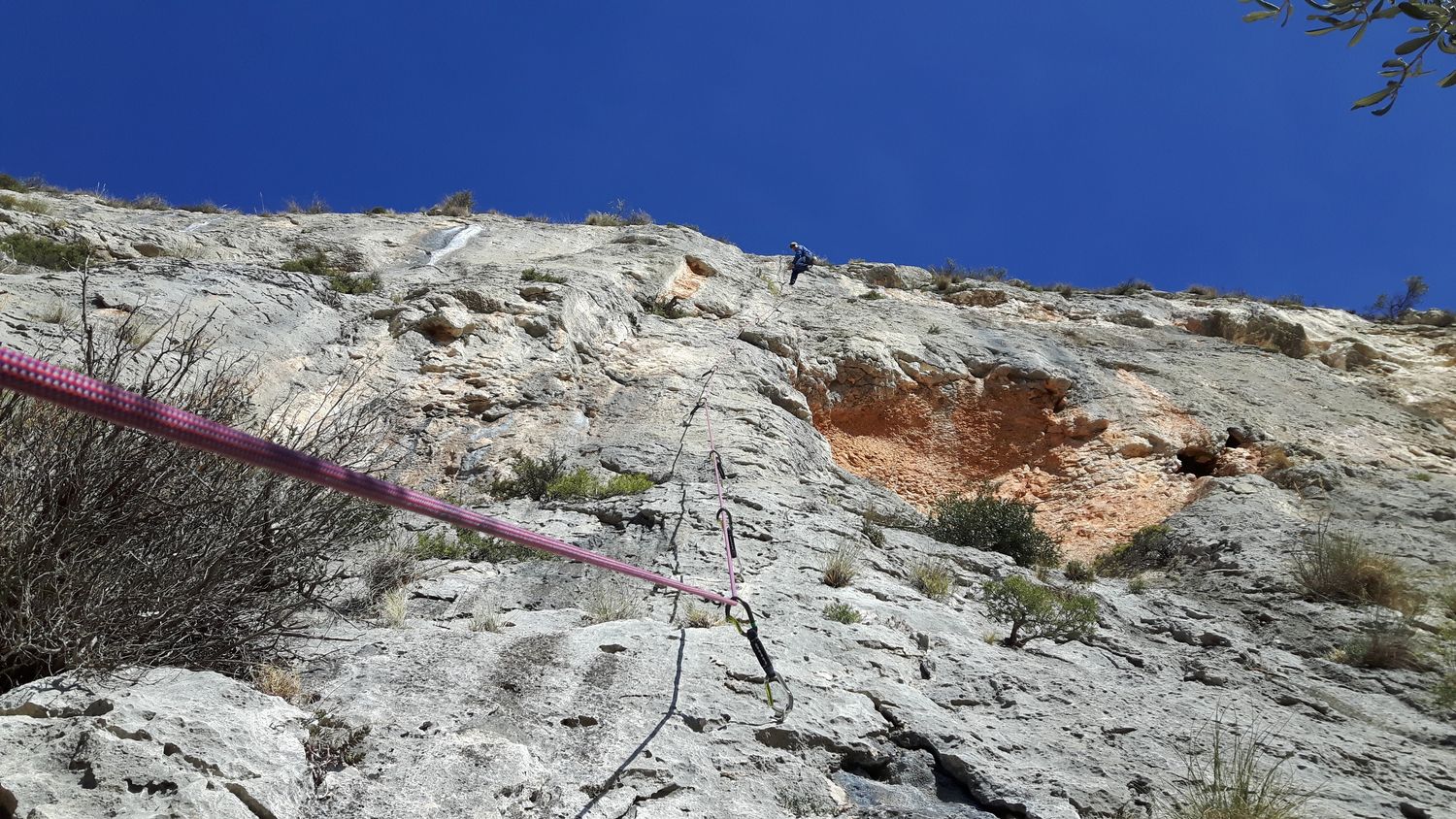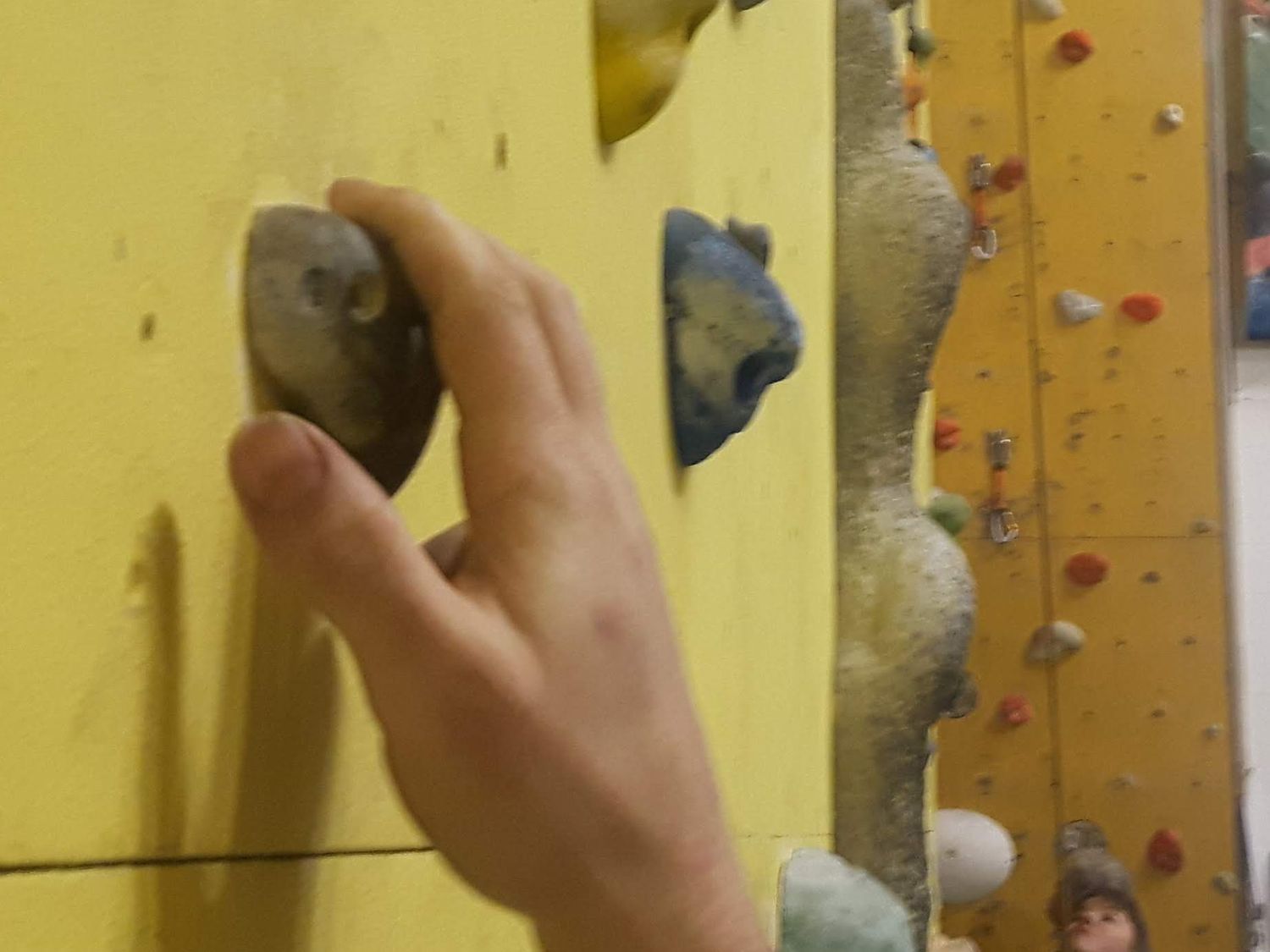How To Avoid The Most Common Climbing Injury
/WRITTEN by CHRIS & ANNE ENSOLL
Several years ago whilst running a climbing wall session as part of a Single Pitch Award assessment course, I got on the wall to demo a move and pop!! Everyone in the room heard it. I was properly warmed up, the hold I was pulling on wasn’t tiny, my feet didn’t slip – but I had definitely damaged a flexor pulley in one of my fingers. Pulley injuries are the most common injury in climbers, and A2 pulley injuries happen most often. Here’s an overview of pulley injuries, how to avoid them, and what to do if it happens to you.
Sport climbing, Costa Blanca, Spain
Finger anatomy
There are no muscles in your fingers. The flexor muscles in the palm of the hand have tendons which run along the underside of the bones in the fingers. The tendons are kept in place by two kinds of ligaments which act like pulleys: five annular ligaments (A1-A5) and three cruciate ligaments (C1-C3). When the flexor muscles contract, they pull on the tendons and curl the fingers. A pulley can be partially or completely ruptured. Complete rupture of the A2 and A3 pulleys results in a ‘bowstring’ injury, which is what happened to me.
Causes of flexor pulley injuries
Injury to a flexor pulley happens when the load is too much for the pulley to bear. The main cause in climbing is crimping on small holds because of the forces it exerts on the pulleys, especially the A2 pulley. If you’re doing a ‘bad’ crimp (see below), a slip of the foot or dynamically loading the hand can be enough to cause the injury, because both increase the strain on the pulleys.
Injury is much more likely if you haven’t warmed up properly, or if you’re doing desperate dynamic moves to a tiny crimp with poor footwork and poor body positioning.
Prevention of flexor pulley injuries
Make sure you warm up properly – that means twenty minutes of aerobic exercise. That’s easily done if you’re walking to an outdoor crag, but you have to be much more intentional about it if you’re climbing indoors. Brisk movement for a few minutes followed by dynamic stretching, followed by easy climbing on a few routes should do the trick.
Slow precise footwork and good body position are really important here. Think about flowing effortlessly over the rock, transferring your weight slowly and smoothly, and avoiding intense dynamic movements. Using your entire body to climb will reduce the stress on your hands and fingers.
If you’re quite new to climbing, your muscles will be getting stronger, but your tendons and ligaments take longer to adapt. Repetitive stress is not good for them. If you’ve been climbing less than a year your fingers haven’t yet adapted to supporting your body weight, so you need to be extra careful.
Try to crimp with an open hand and extended fingers rather than a closed hand which puts huge strain on the A2 pulleys. Practice it and it will become second nature.
‘bad’ crimp
‘good’ crimp
‘GOOD’ CRIMP - three-finger drag
Avoid too much repetition. If you can’t make that crux move after a few attempts, stop and come back to it another day.
Always take notice of pain or twinges in your fingers – don’t over-ride the warning signs.
Opinions on taping are mixed. Research has shown that circular taping is probably ineffective in preventing pulley ruptures. In addition, taping can make you feel more confident, so can lead to applying more pressure on the pulleys.
Give yourself enough recovery time between climbing sessions.
Drink plenty of water to keep your tendons elastic. A happy mountaineer pees clear – that applies to climbers too.
Treatment of flexor pulley injuries
Don’t do what I did. When I injured my flexor pulleys, I had work to do so I strapped the injured finger to the next finger and kept on working. I now know that I should have properly rested and rehabbed my finger. Because I didn’t, my finger is permanently ‘bowstringed’ - see the photo below.
Get a medical diagnosis to determine exactly what has been injured, preferably with physio treatment. Physio for five weeks or so will significantly reduce the risk of re-injury, and you will be told what you can and can’t do in the early stages of healing.
Some sources suggest that the only treatment for a complete A2 and A3 rupture is surgery.
Take your time when you start climbing again – it could be months before your finger is back to full strength. Until then you probably shouldn’t be climbing very aggressively.
What an A2 and A3 pulley injury looks like if not treated correctly
Further reading
Schweizer A. Biomechanical effectiveness of taping the A2 pulley in rock climbers. J Hand Surg. 1999;25(1):102–107.
Warme WJ. The effect of circumferential taping on flexor tendon pulley failure in rock climbers. Am J Sports Med. 2000;28:674–678.










